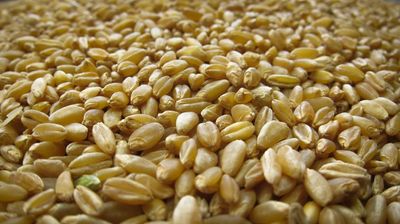What is Durum Wheat?
As you’re slurping down your spaghetti Bolognese, have you ever stopped to wonder exactly what the pasta is made of? Although pasta can be made from other types of wheat, durum wheat is considered to be of higher quality for the production of pasta. Durum wheat, Triticum turgidum, is used for most dried pastas and couscous as well as for raised and flat breads throughout the Middle East.
Durum Wheat Information
Durum is the only tetraploid (four sets of chromosomes) species of wheat that is commercially cultivated today. It was developed through artificial selection from domesticated emmer wheat grown in central Europe and the Near East in around 7,000 B.C. Like emmer wheat, durum is awned, meaning it has bristles. In Latin, Durum means “hard” and, indeed, durum wheat is the hardest of all the wheat varieties, meaning it has the hardest kernels. It is a spring wheat grown primarily in the northern Great Plains. While durum wheat can be used to make bread, it is almost exclusively used to make semolina flour for pastas.
How to Grow Durum Wheat
We all think of acres of waving wheat fields, but even a small plot can garner the home gardener enough grain for household use. Planting a few pounds of seed can turn into eight times as much edible grain, so even a small plot of wheat should be plenty for the average family. Durum wheat, a spring wheat, should be planted as early as the ground can be worked. Prepare a sunny site in the fall by plowing and then till and sow seed in the spring. Ideally, the soil pH should be neutral, around 6.4. Seeds can be broadcast by hand in a small plot. It can even be planted in rows as you would other types of crops. Cover the seed by raking it to a depth of 1 to 1 ½ inches (2.5-4 cm.) and tamp down the seeded area.
Durum Wheat Care
Once the area is seeded, there really isn’t all that much additional care when growing durum wheat. Just make sure to give the plants an inch (2.5 cm.) of water per week. Of course, if you get a prolonged dry spell, water more often. The plants are sown so close together that nary a weed will grow, plenty of time to just sit back and admire your very own waving wheat field for a few months, until it’s time to harvest and thresh.
